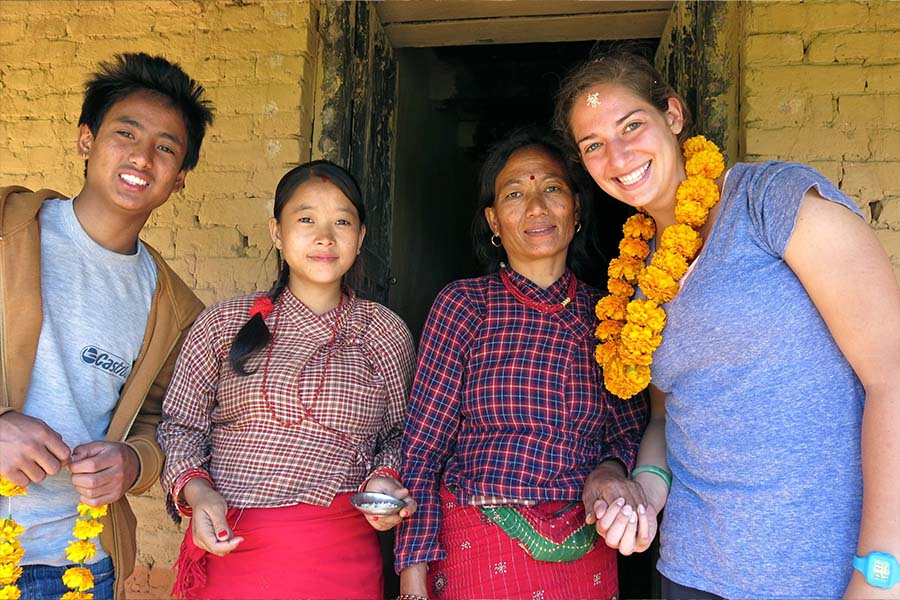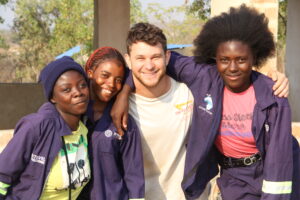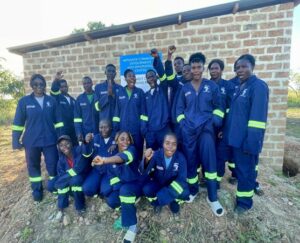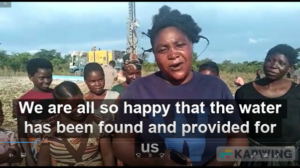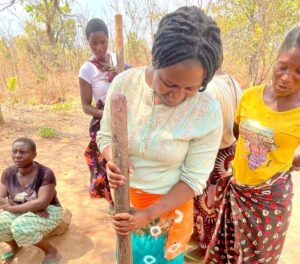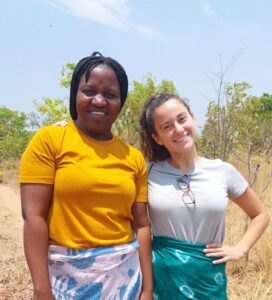by Deena Cowans, Tevel Community 14th Cohort. Originally published in her blog Beit Deena.
I recently spent a few days in Manegau, a Tamang (ethnic group/caste) village in the hills outside Kathmandu, enjoying a homestay and relaxing with the other volunteers. The natural beauty around Manegau is almost indescribable. The village sits at an altitude of about 1800M, with incredible views of the hill region and even some of the Himalayas when it’s not cloudy. There is so much greenery, and many flowers and plants were still blooming during our visit. The natural scenery, clean air and slow pace of village life provided a much-needed respite from the pollution and crowding of Kathmandu and the intense pace of orientation activities.
A main part of our visit to Manegau was the opportunity to do a homestay with a local family. We slept in their (very hard and very short) beds, ate our meals with them and passed the hours sitting on the front porch of the mud house watching the goat, cow and buffalo munch away as the rooster crowed pathetically. Honestly, every time the rooster crowed, he would sort of peter out sadly at the end as if he knew there was no hen to answer him, causing us all to burst out laughing every time. The meals in particular were a source of amusement for many of the volunteers, both in terms of quantity of food and variety, or lack thereof.
In Nepal, a meal is not considered a proper meal unless it contains rice, almost always in the form of dal bhaat (rice with lentil soup/sauce) sometimes served with tarkaari (vegetables) or maasu (meat). At the house in Kathmandu, our tarkaari is usually curried cauliflower and potatoes, but in Manegau we had some leafy green with chili twice, an egg and tomato mixture once and a spiky green vegetable about twice the size of my thumb that we helped pick off the tree and empty of seeds in the morning (also prepared in some very spicy sauce).
Part of my host family- from left, Aniel, Shrijati and Moina (with tika on my head, of course)
Nepalese take their dal bhaat very seriously. At the house in Kathmandu, we have dal bhaat every single day for lunch, but in Manegau, 10am and 7pm were both prime opportunities to eat dal bhaat. My host family did not inflict thrice daily dal bhaat and simply gave us chiya (tea) and a pastry for breakfast, but some of the other volunteers had the honor of eating a large bowl of rice at 6:30am in addition to the 10a and 7p dal bhaat. Rice is also often used as a tika, the forehead spot stuck on as a sign of honor or greeting and sprinkled on the head of humans or animals for good luck.
Wasting food is not tolerated; Nepalese eat with their right hand, and will always finish every grain of rice on the place and even lick their hand clean at the end of the meal. This form of eating caused plenty of amusement for my host family, who got a good laugh out of my attempts to feed myself with my right hand (I eat with my left) without silverware. We also got a good laugh out of one of the other volunteers with me in the homestay, who was served a bigger portion of rice than she could manage and looked so sadly at her remaining food that our host brother took pity and fed the leftovers to the goat.
Our homestay in Manegau was also the first time I was really struck with the difference between where I grew up and where I am now. My homestay family consisted of a mother, Moina, her two youngest sons, Rajit and Aneel, and the oldest son’s wife, Shrijati (I think that was her name…). Shrijati for me embodied many of the challenges of the developing world. Shrijati was from a village many hours from Manegau, 20 years old and 8 months pregnant. Her husband works in Kathmandu, but she lives in the village with her mother-in-law and younger brothers-in-law. She seemed to be responsible for most of the household tasks, including cooking, cleaning, taking care of the animals, doing dishes and collecting the tarkaari for dal bhaat.
We asked her where she thought she would give birth, and she looked at us like we were crazy—obviously she would give birth at home. There is a very good hospital an hour walk from Manegau (probably less than half an hour drive), but from what I understood, there was never any question that she would give birth at home. In the West, if by some accident a mother is not able to make it to the hospital, an ambulance is called and there are still medical professionals on hand to assist her with the birth.
After Shrijati’s baby is born, he or she may or may not be washed, depending on whether or not someone carried water from the spring several hundred meters away that day. The water certainly will not be sterile, and waterborne diseases are rampant in Nepal, leaving the baby in danger of dying of diarrhea. Shrijati has not been taking folic acid or prenatal vitamins, nor would she know what those are if presented with them. Her baby will not receive vaccines, not have toys and books to play with, will not have access to quality primary education nor many of the other resources we consider vital in the Western world.
For years I have read about health issues in the developing world, and even now I am reading Jeffrey Sachs’ The End of Poverty (highly recommend!), but reading about issues like lack of safe drinking water, maternal mortality during childbirth and many other problems of the developing world and seeing and meeting people who suffer from those problems (and even living many of them myself every day) are two completely different experiences. I still cannot wrap my head around the fact that in 2013, nearly 2014, there are still babies being born in mud huts to mothers who have no access to trained health professionals, electricity, medicines, running water etc. I will write more about these differences and the ways in which I feel this gap may be widening beyond repair in later posts; Manegau was simply the first time I felt overwhelmed by seeing people I knew and shared meals with confront these challenges as normal parts of their daily lives.

